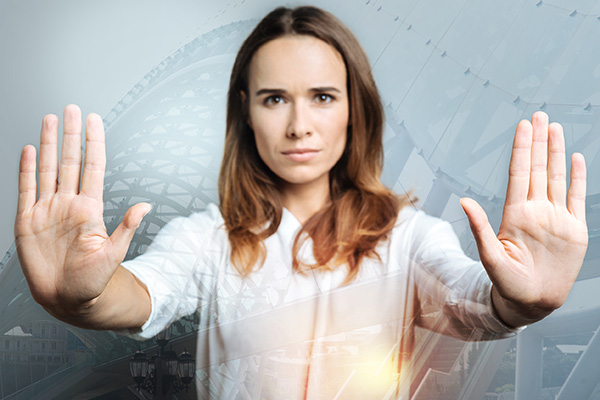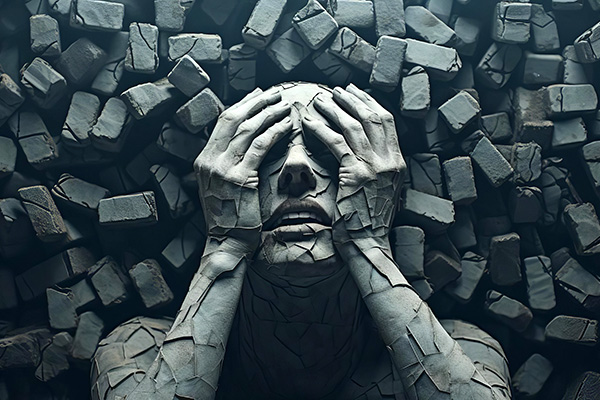spiritual teachings
Did Your Soul Choose Your Life Challenges?
 “Oh, why do I have such terrible karma?” or “Why does the universe keep throwing me curveballs?” or “Is God punishing me?” These are questions that clients often ask me when they face struggles in life.
“Oh, why do I have such terrible karma?” or “Why does the universe keep throwing me curveballs?” or “Is God punishing me?” These are questions that clients often ask me when they face struggles in life.
Spirit has repeatedly shown me in many readings over the years that we all have a kind of “architect’s plan” that we design before we incarnate into this life. This soul plan for our life journey lays out the lessons we’re going to learn and the experiences we’re going to have.
This spiritual principle is known by various names (depending on the context or belief system), including our spiritual blueprint, life design, divine plan, life script, soul contract, predestined path, and so on.
I prefer “architect’s plan” because it reminds me of the careful, meticulous planning an architect does when designing a new structure, long before the practical, hands-on construction takes place on site.
Like architects, we calmly and clearly create a plan for our life journey before we incarnate. It is only when we are here in the physical world to embody our plan that we fully experience the intensity and the many dangers and pitfalls that are part of our chosen journey, including all the fear, love, pain, hardship, joy, suffering, and everything in between.
Yes, it is hard to believe that we actually choose to face challenges and difficulties in our lives. But various spiritual traditions and esoteric philosophies tell us that our soul’s path is predestined or planned before we’re born, or at least that we have certain free will choices and options along the way.
How To Counteract Toxic Technology
 The other day I was sitting at a traffic light waiting for the light to turn green, when I noticed something odd. Everyone around me was bowing their heads. For a split second, I thought I was witnessing some kind of miracle. Were they all having a quiet moment of prayer together?
The other day I was sitting at a traffic light waiting for the light to turn green, when I noticed something odd. Everyone around me was bowing their heads. For a split second, I thought I was witnessing some kind of miracle. Were they all having a quiet moment of prayer together?
But, of course, no one was praying. They were all glued to their cell phones!
At first I laughed at myself for jumping to such a naive spiritual conclusion. But then it hit me: this tiny snapshot of life says so much about the world we live in today.
We’ve all heard the wild rumors over the years about microchips being implanted in people’s hands, arms, or foreheads. Conspiracy theories and fear-mongering about futuristic technology have kept these ideas on the fringes of our culture and in the back of our minds for decades.
There was a time not so long ago when it still sounded like something out of a science fiction movie, right? But look at us today. We’ve been chipping our pets since the late ’80s. So, is the leap to humans really that far-fetched? Probably not.
And let’s not forget the biblical prophecy of the “mark of the beast” mentioned in the Book of Revelation. What if this predicted dystopia is unfolding right under our noses – but in a much less dramatic way?
Who needs implanted microchips when we are all clutching our smartphones 24/7? That beastly microchip doesn’t need to be under our skin; maybe it’s already permanently in our hands! And it has our full, undivided attention all day long.
The Miracle Power Of Divine Timing
 Patience is considered a virtue, something that makes us better people. But it’s so much more than that — it’s a spiritual principle that can truly transform your life for the better.
Patience is considered a virtue, something that makes us better people. But it’s so much more than that — it’s a spiritual principle that can truly transform your life for the better.
In today’s fast-paced, click-now world, where everything is at our fingertips, it can seem a real struggle to practice patience. But being patient isn’t just about waiting. It’s about how you wait.
It’s about slowing down, taking a deep breath, and letting go of the need to control everything. Patience is not about being passive or giving up; it’s about trusting the timing of the universe and going with the flow.
Everything in life happens exactly when it’s supposed to, even if it doesn’t feel that way in the moment. There’s always a bigger plan at play — one that we co-create with the universe through our thoughts, intentions and actions. When you trust this process,you soon discover that even setbacks and obstacles are actually stepping stones.
When things don’t go as planned, it’s easy to get frustrated and think that nothing is working out. But often what feels like a “no” or a delay is actually the universe saying, “Hang in there, I’ve got something better for you. Patience is about believing that everything will eventually make sense, even if you can’t see it now.
The problem with impatience is that it upsets everything. It’s like trying to push a door that’s supposed to pull — it just creates resistance. When we’re impatient, relationships can crack under pressure. Work can feel unstable or hard to pin down. Money problems seem bigger and harder to solve. Impatience feeds frustration, and frustration can create an energy block that pushes the good stuff away.
Reclaim Your Peace And Power With Healthy Boundaries
 Saying “no” is one of the most powerful things we can do to maintain our personal and spiritual well-being and energetic balance.
Saying “no” is one of the most powerful things we can do to maintain our personal and spiritual well-being and energetic balance.
Many of us are caught up in the daily whirlwind of commitments, expectations, and the constant need to meet the demands of others. For those on a spiritual or esoteric path, this can be especially challenging.
The desire to be compassionate and supportive can sometimes blur the lines between compassion and self-neglect. However, one of the most profound spiritual lessons is this: it is okay to say no. In fact, it is imperative!
Knowing when and how to say no is a critical self-care skill that allows you to set healthy boundaries and protect your time, energy, and mental health. Moreover, it is crucial for our spiritual growth and essential for living a life filled with purpose and fulfillment.
Saying no and standing your ground requires recognizing your inherent worth and honoring your personal limits. Too often we stretch ourselves too thin, trying to be all things to all people. This may come from a fear of disappointing others or a belief that our value is in how much we give. Many of us also feel spiritually obligated to be there for others, often because we are so deeply affected by all the struggles and suffering we see in the world around us.
However, when we put the needs of others ahead of our own without balance, we risk depleting our physical, emotional, and spiritual energy. In such a depleted state, we are of no use to anyone.
Breaking Through The Walls Of Disconnection
Have you felt like you have been talking to brick walls in your relationships lately? If so, rest assured that you are not alone! This issue has been coming up more and more in my readings. Many of my clients complain that they feel like they are not being heard or that they are simply not getting through to people.
Many factors contribute to this feeling. With so many of us addicted to our phones and social media, it’s become very easy to be physically present but mentally elsewhere. This often makes any attempt to have a meaningful conversation feel like it’s taking place in an echo chamber.
We are surrounded by so many distractions these days — constant notifications, endless scrolling, and click-bait videos that often prioritize drama and misinformation over truth and depth. These distractions pull our attention away from what really matters: meaningful connection, both with others and with ourselves.
Modern life is busy and demanding. People are constantly juggling many responsibilities and stresses, and often feel drained or overwhelmed. Many of us rarely have the emotional bandwidth to fully engage in meaningful conversations.
On top of that, people are less likely to have face-to-face conversations, or at least make a phone call, as most communication these days takes place via text messages and social media comments. As a result, there is a growing lack of communication skills and many misunderstandings occur because people have difficulty expressing themselves clearly or actively listening when they are actually having a conversation in person.
Forgiving Yourself Is A Spiritual Necessity
 Self-forgiveness is more than just a mental health recommendation – it is a spiritual necessity. It is vital for the spiritually aware person to release guilt, self-blame, and self-criticism, because forgiving oneself is crucial to both personal well-being and spiritual progress. It allows for healing, growth, and the ability to live a more fulfilling and harmonious life.
Self-forgiveness is more than just a mental health recommendation – it is a spiritual necessity. It is vital for the spiritually aware person to release guilt, self-blame, and self-criticism, because forgiving oneself is crucial to both personal well-being and spiritual progress. It allows for healing, growth, and the ability to live a more fulfilling and harmonious life.
Failure to forgive ourselves can have profound personal and spiritual side effects. Carrying guilt and self-blame leads to chronic emotional distress and contributes to anxiety, depression, and low self-esteem. Over time, this can manifest itself in physical symptoms such as headaches, fatigue, or even chronic illness.
A lack of self-forgiveness undermines self-worth and hinders personal growth and development. Difficulty forgiving yourself also strains your relationships with others, as it can lead to withdrawal, defensiveness, or projecting negativity onto those around you. Without forgiveness, our negative feelings toward ourselves can fester and damage even our most cherished relationships with our loved ones and friends.
Holding onto guilt and self-blame blocks the flow of positive energy through the chakras and hinders spiritual well-being. For example, guilt often stagnates in the solar plexus chakra, affecting one’s sense of personal power. Self-forgiveness is essential for clearing such blockages in the energy field.
Forgiveness is also essential to achieving inner peace and harmony. Without it, one can experience constant inner turmoil and restlessness. When we hold onto guilt, shame, or self-blame, parts of our spiritual essence or inner divinity are suppressed or disconnected. It causes separation from one’s spiritual path or a sense of disconnection from spirit and the divine.

